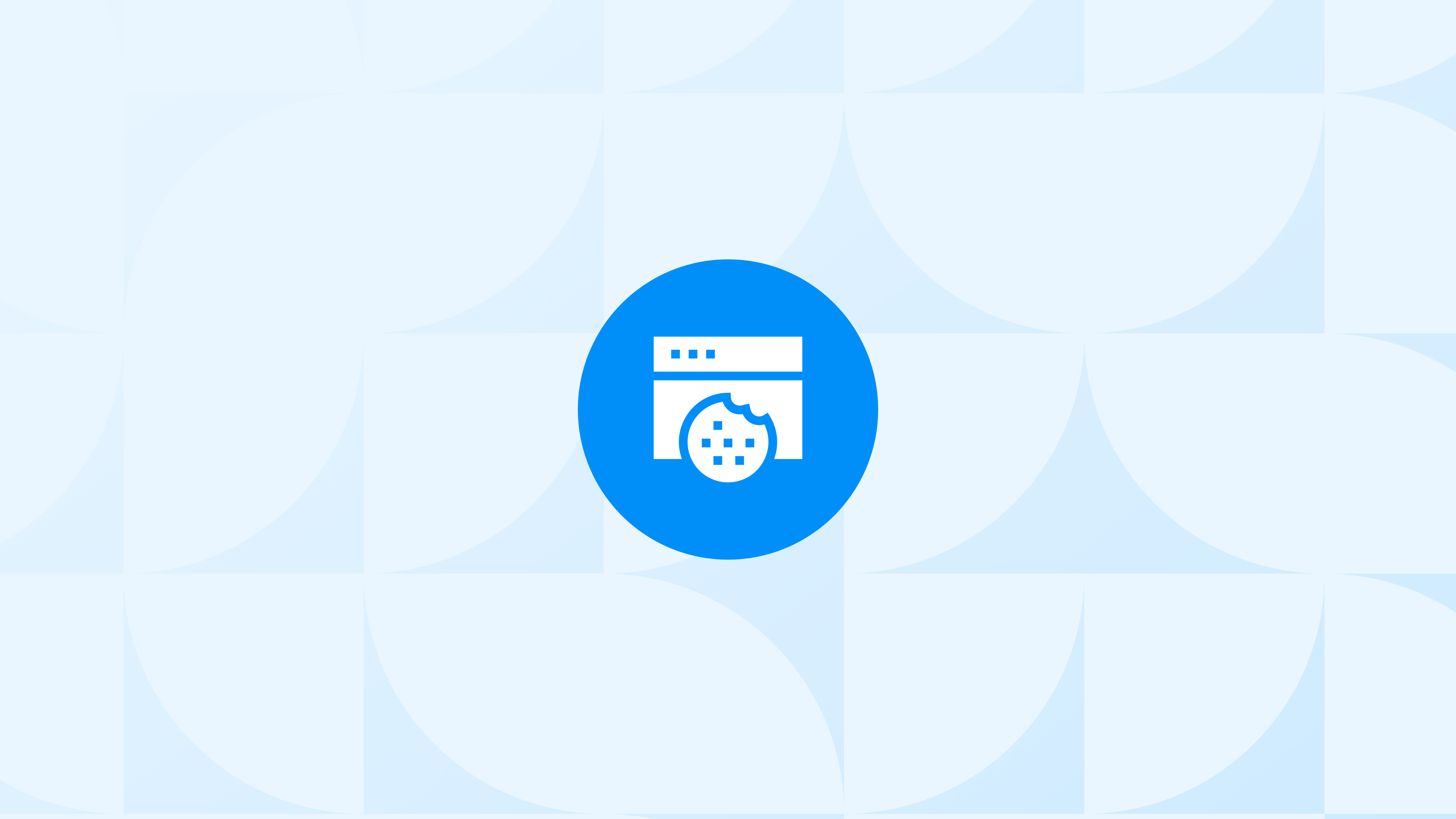Shopify has significantly improved its native cookie banner over the past two years — with key features rolled out at different times.
- In April 2023, the Privacy & Compliance app was revamped with new consent pop-ups and customization options.
- By February 2025, Shopify added support for adjustable consent preferences and checkout banner visibility.
- And most recently, in May 2025, banners became visible on customer account pages, as part of the Summer ’25 Edition.
These gradual upgrades have led many privacy-conscious merchants to ask a crucial question:
Do I still need a tool like Cookiebot, or is Shopify’s built-in banner enough?
The answer depends entirely on your store’s setup, your legal exposure, and how much control you need over cookie detection, blocking, and audit trails.
In this article, we’ll break down what Shopify’s native banner now includes, what it still doesn’t do, and when a full Consent Management Platform (CMP) like Cookiebot becomes necessary.

Key takeaways from this guide:
Shopify’s native banner now includes several advanced features — including GTAG, Google Consent Mode support and checkout visibility.
It’s a strong option for stores with basic compliance needs and limited third-party tools.
Cookiebot and other CMPs provide granular cookie scanning, reporting, and dynamic blocking — which Shopify doesn’t.
Even with Shopify’s recent EU-focused updates — including adjustable consent preferences, checkout banner visibility, and region-based display — stores operating in the EU may still require Cookiebot or a similar tool to meet stricter expectations around consent logging, cookie scanning, and script blocking.
The two solutions can also be used together — with Cookiebot layered on top of Shopify’s native privacy controls and Customer Privacy API managing region-based display and consent signaling.
Bonus: Discover the best GDPR apps for your Shopify store.
What the Shopify Native Cookie Banner Offers (2025 Version)
Shopify’s native cookie banner has improved significantly between 2023 and 2025. It now supports core consent features that cover most standard compliance needs — especially for merchants using Shopify’s built-in tools.

Here’s what it offers as of 2025:
Google Consent Mode v2 Integration: Sends anonymized signals to Google before consent is granted, improving compatibility with GA4 and Google Ads.
Multilingual Support: Automatically displays the banner in the visitor’s browser language or store setting.
Consent at Checkout: Prompts users for consent directly at checkout, aligning better with GDPR requirements.
Basic Preference Categories: Lets users choose between essential, analytics, and marketing cookies.
Privacy Policy Linking: Connects the banner to the store’s privacy policy — either custom or auto-generated by Shopify.
Region-Based Display: Shows the banner only to visitors from regulated regions (e.g. EU, UK, California).
These updates make the native banner a viable solution for many stores — but not a full replacement for a dedicated Consent Management Platform. Next, we’ll cover what Cookiebot offers on top of this.
Bonus:Explore the Best Strategies to Improve Cookie Banner Acceptance Rate
What Cookiebot Brings That Shopify Doesn’t
Shopify’s native banner covers the basics — but Cookiebot is a Consent Management Platform (CMP) built for broader use across websites and platforms. It offers deeper control, visibility, and compliance documentation — making it suitable for businesses with more complex tracking or legal requirements.
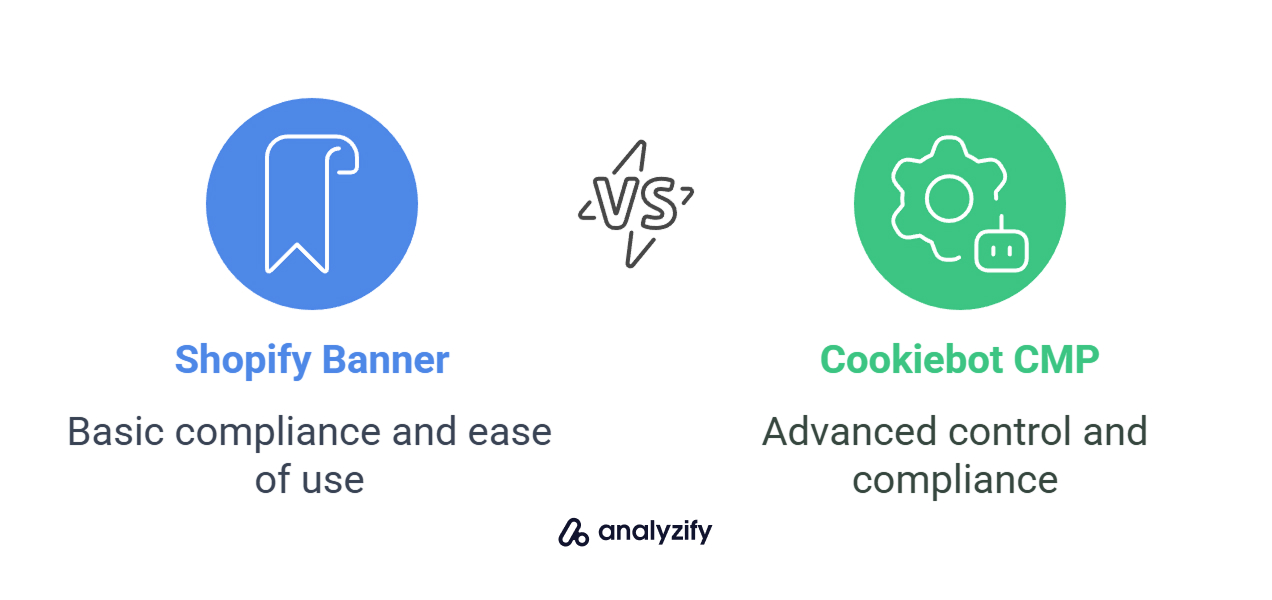
If your store runs third-party tools, uses dynamic scripts, or targets strict markets like the EU, this extra layer becomes important.
Here’s what Cookiebot offers beyond Shopify’s built-in features:
Cookie Scanning and Categorization
Cookiebot automatically scans your website and detects all cookies — including those set by third-party apps, embedded content, or tracking pixels. It then categorizes them into functional, statistical, marketing, etc., and updates your cookie declaration accordingly.
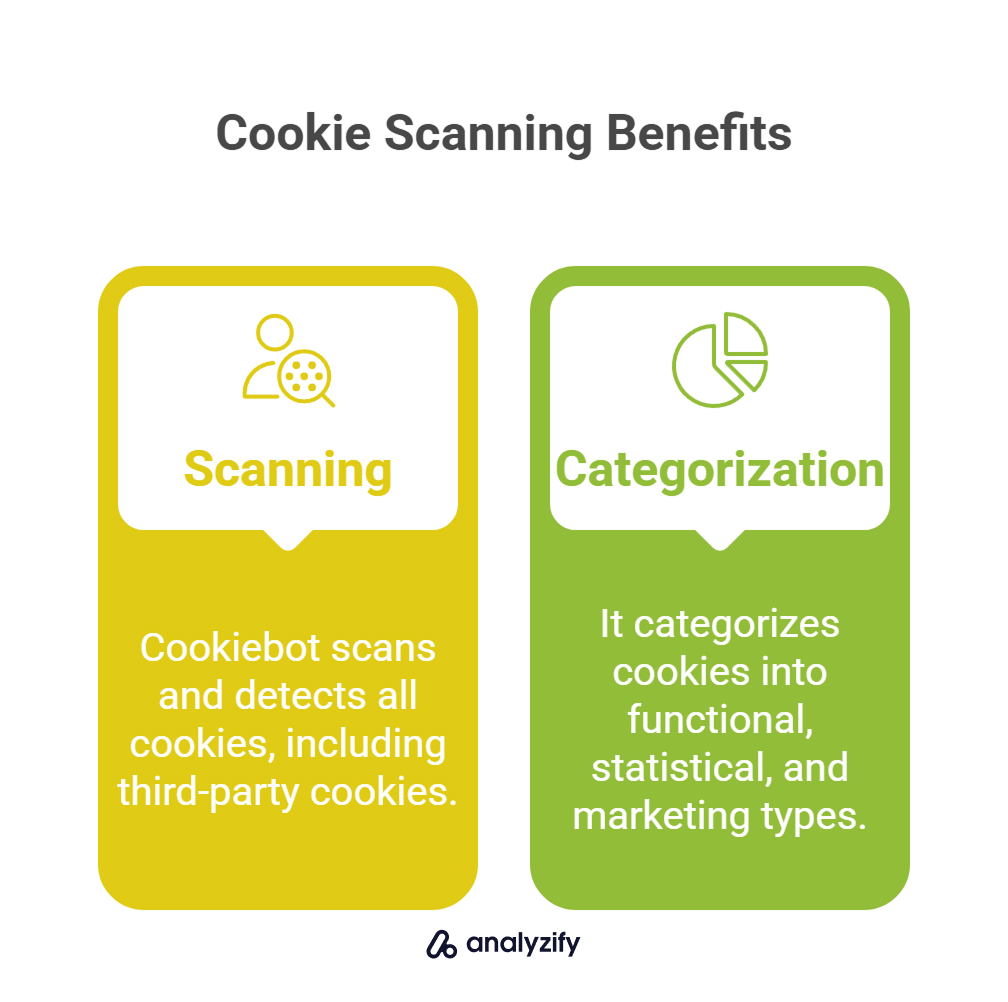
Shopify only manages known cookies within its ecosystem.
Cookiebot helps you uncover invisible or unauthorized cookies — often missed by native solutions.
Real Consent Logs and Audit Trails
Cookiebot stores detailed consent records and user preferences, which can be downloaded as part of your GDPR/CCPA audit trail.
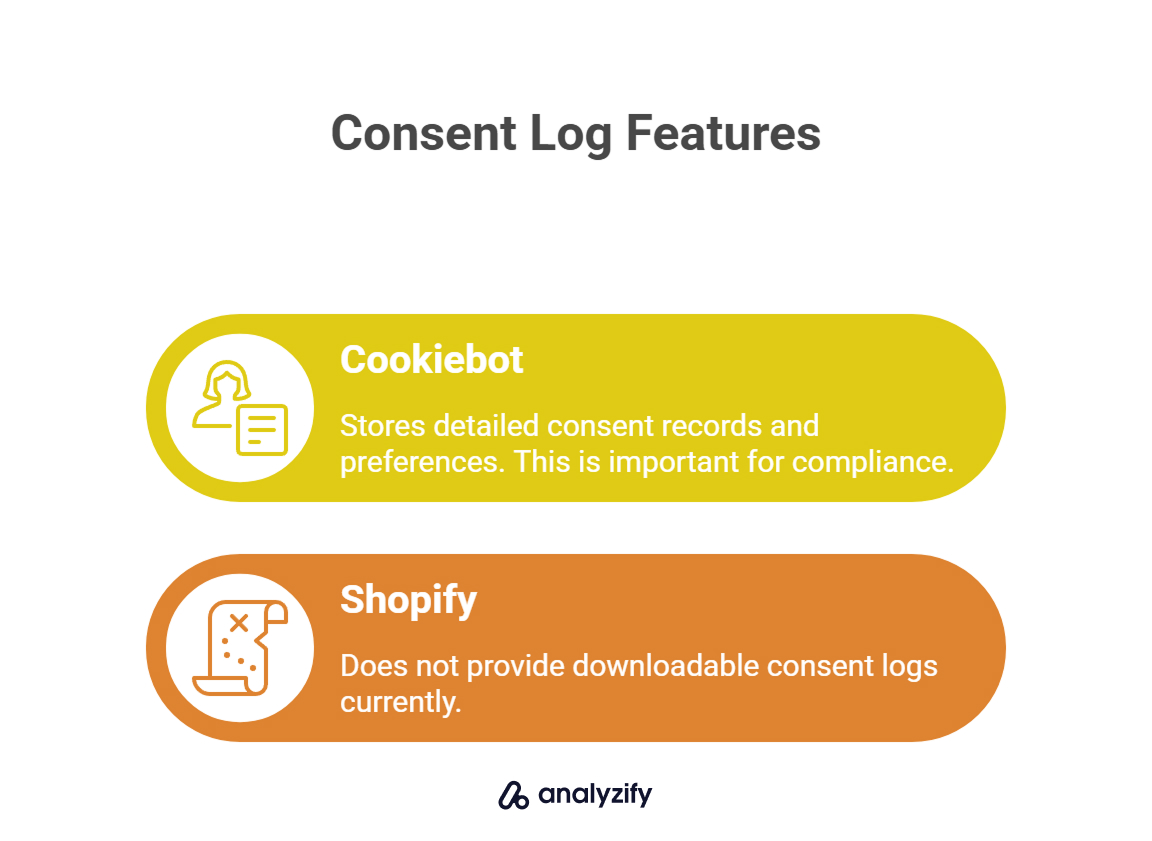
This is especially important if you’re operating in regulated regions or working with legal teams that require proof of compliance.
- Shopify does not currently provide downloadable consent logs.
Script Blocking and Dynamic Consent Control
You can configure Cookiebot to block cookies and scripts until consent is given — including tools like Hotjar, Meta Pixel, and affiliate trackers. It dynamically injects or suppresses scripts based on the user’s selections.
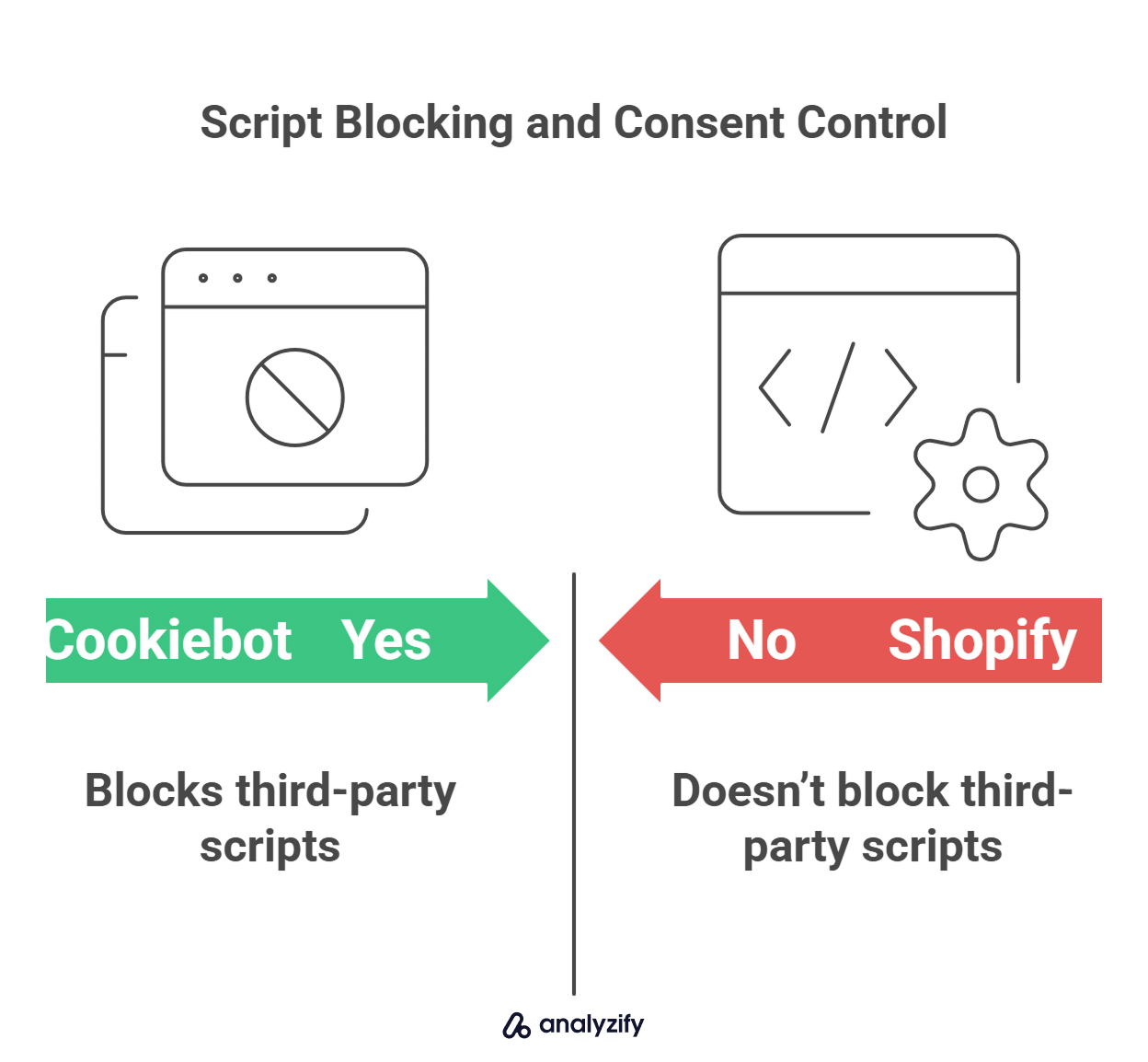
Shopify doesn’t block third-party scripts out of the box.
You’d need custom code or another integration to achieve this behavior.
Embedded Cookie Declarations and Preference Centers
Cookiebot allows you to embed a live-updating cookie declaration page, which reflects your latest scan results. Users can also revisit and update their consent at any time using a dedicated preference center.
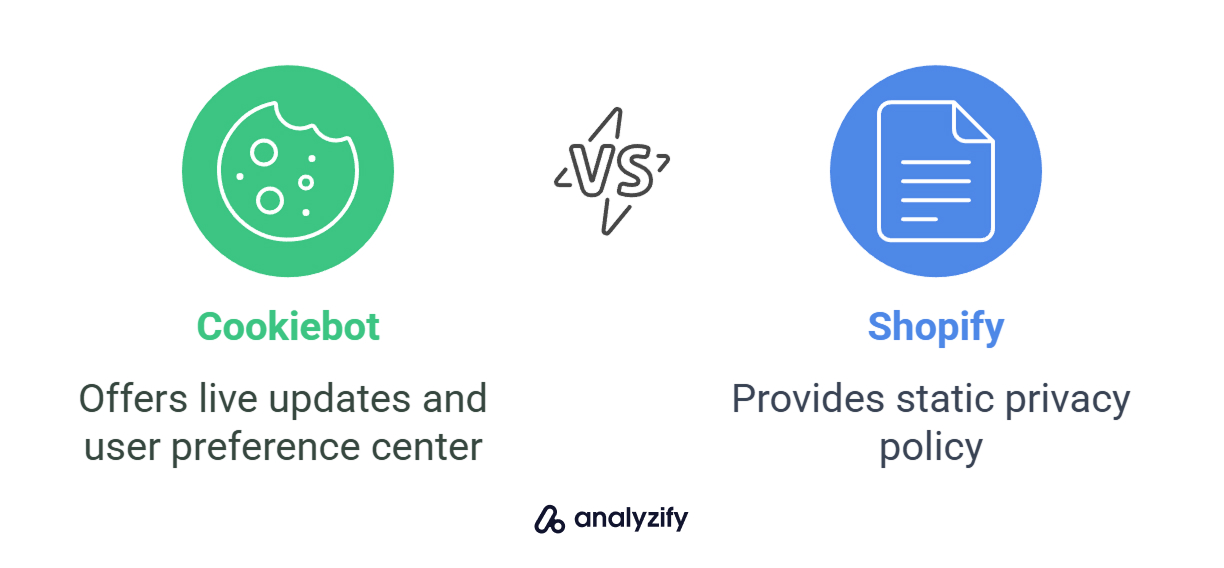
- Shopify links to a static privacy policy — not a live cookie listing.
Advanced Compliance Configurations
Cookiebot supports advanced compliance options like prior consent (no cookies fired before opt-in), granular preference control, and integration with legal tools and compliance teams.
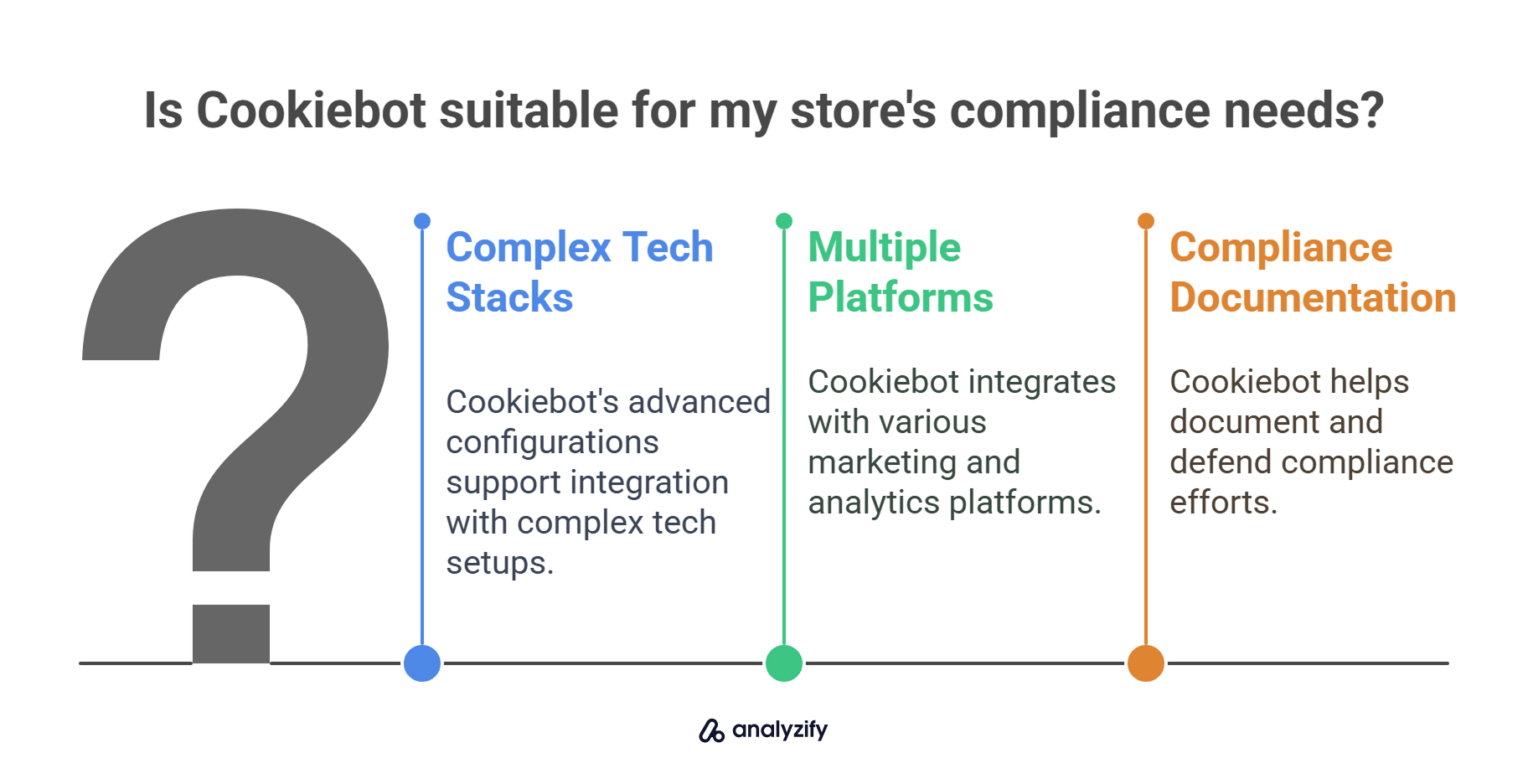
These features make Cookiebot a better fit for:
Larger or multi-region stores with complex tech stacks
Stores using multiple external marketing or analytics platforms
Merchants who need to document and defend their compliance efforts
Where Shopify’s Native Banner Is Usually Enough
For many Shopify merchants, especially those with straightforward setups, the native cookie banner is already doing its job. It meets basic regulatory requirements, supports Google Consent Mode, and gives shoppers a clear way to manage their preferences.
So when is this built-in solution actually enough?
You Only Use Shopify-Native or Well-Integrated Apps
If your store relies primarily on Shopify’s built-in features — like Shopify Analytics, Email, or basic sales channels — then cookie behavior is already managed within Shopify’s framework. These apps follow Shopify’s privacy model and don’t inject third-party cookies on their own.
Your Store Doesn’t Use External Tracking Scripts
If your store doesn’t use external tracking tools like Meta Pixel, TikTok, Bing Ads, or Hotjar, you may not need a script blocker. But keep in mind — many of these platforms require their cookies and tracking scripts to be blocked until the user gives explicit consent, in accordance with their own consent policies. Shopify’s native banner does not automatically integrate with these platform-specific frameworks.
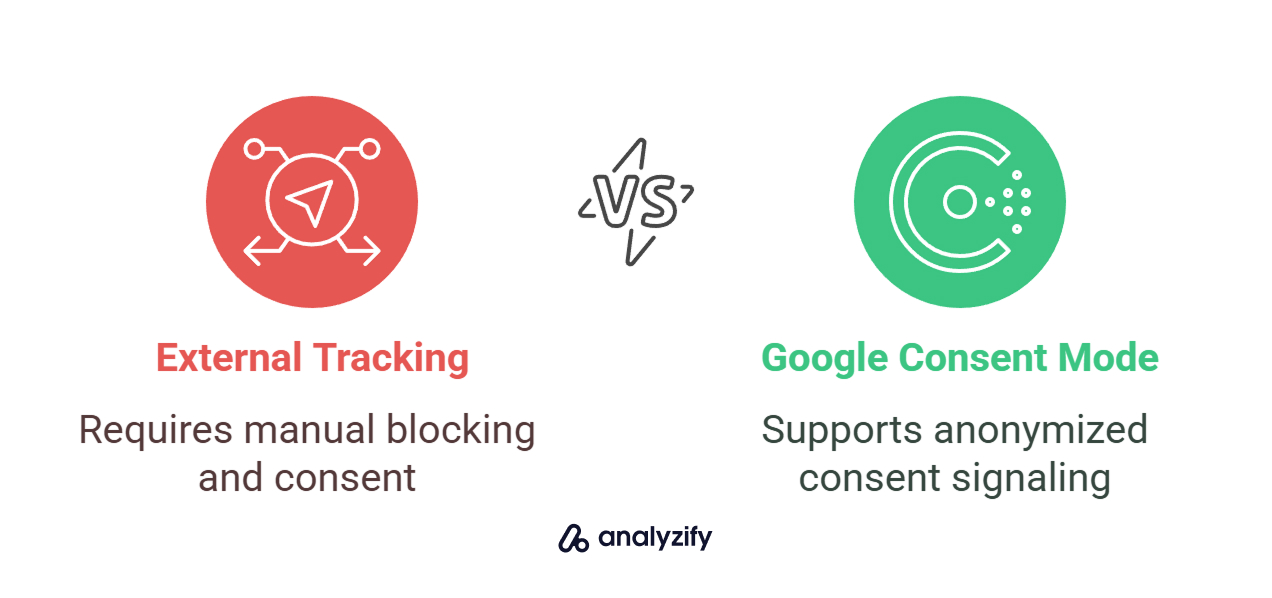
That said, Shopify does support Google Consent Mode (GCM), which allows you to signal anonymized consent states to tools like Google Analytics and Google Ads — even without scanning or blocking scripts manually.
You’re Not Targeting Highly Regulated Markets
Stores that only sell to regions like Canada, the Middle East, or Southeast Asia are generally not subject to the same level of cookie consent regulation as those operating in the EU or California. While Shopify continues to roll out compliance and tax improvements in Canada, the legal requirements around cookie banners remain relatively light — meaning a basic notice and preference system is often sufficient.
You Prioritize Simplicity and Fewer Integrations
Cookiebot adds more scripts and logic to your storefront. If your goal is to reduce frontend complexity or minimize the number of third-party tools in your stack, keeping things native is an advantage.
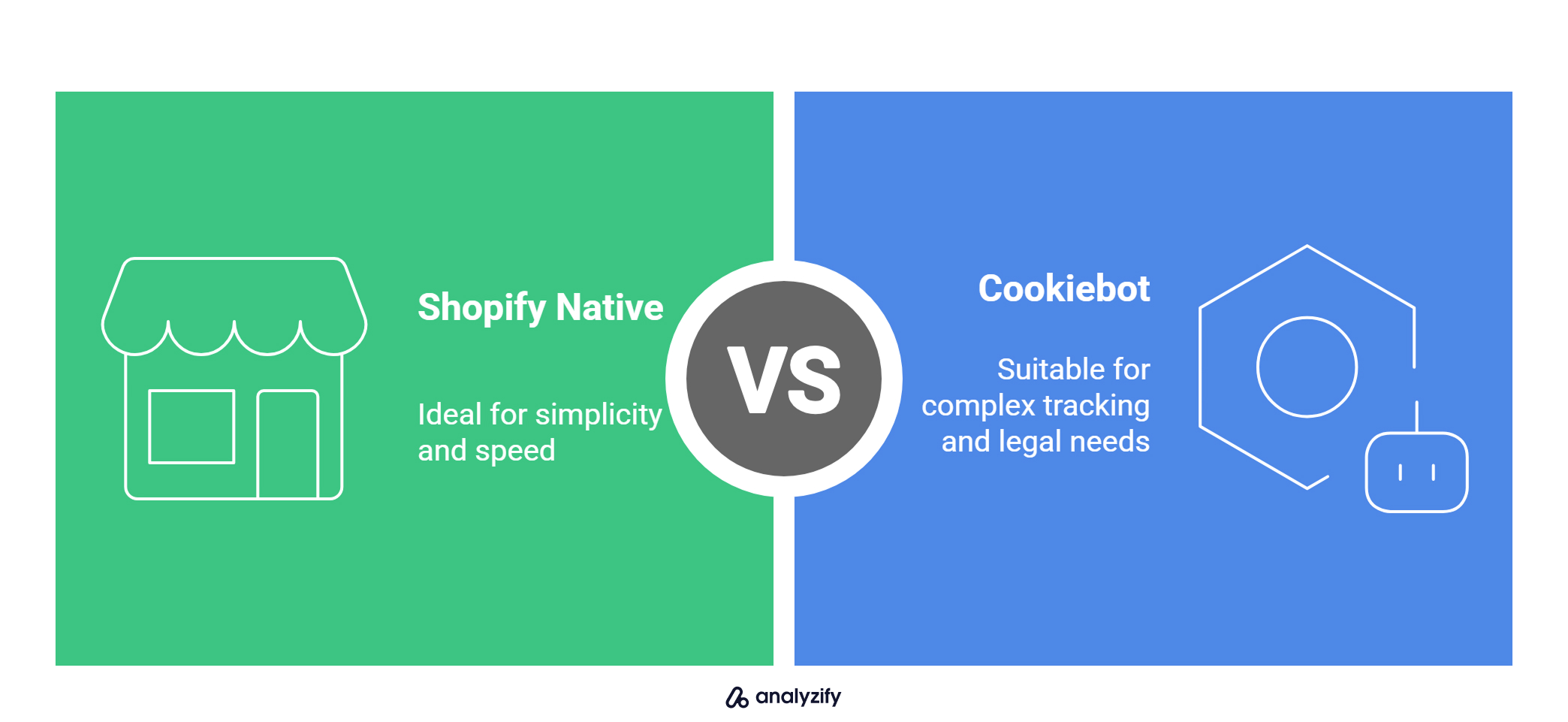
This makes Shopify’s solution a practical and sufficient option for:
Solo store owners or small teams
Stores that don’t rely on external retargeting platforms
Merchants focused on simplicity and speed over full legal documentation
But once your tracking, legal, or marketing setup becomes more complex, limitations start to show — and that’s when Cookiebot (or another CMP) becomes worth considering.
When Cookiebot (or a Full CMP) Becomes Necessary
As your tech stack expands or your legal obligations grow, Shopify’s native banner may no longer meet the level of control or transparency required. Here’s when upgrading to a full Consent Management Platform becomes more than just a nice-to-have — it becomes essential.
You’re Using Multiple External Scripts Across Pages
Shopify’s banner isn’t built to detect or manage third-party scripts outside of its ecosystem. If your store uses multiple analytics, marketing, affiliate, or personalization tools — especially those that inject scripts globally — you’ll need a CMP that can scan, classify, and block those cookies properly.
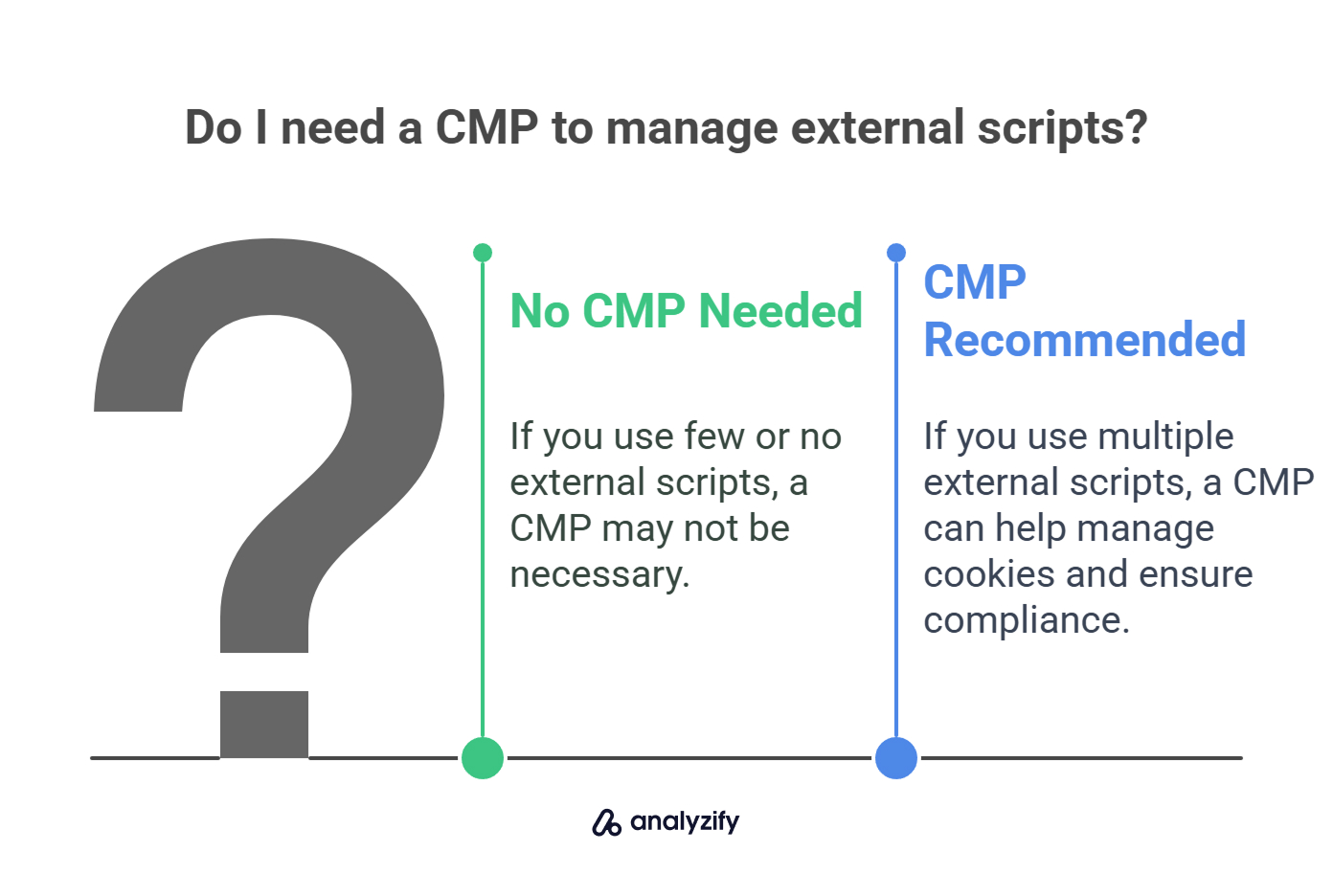
Common examples:
Affiliate platforms that auto-inject tracking cookies
Custom ad pixels with no Shopify app integration
Chatbots, personalization engines, or session recorders
You Sell in Strict Jurisdictions with Legal Expectations
Selling in the EU, UK, or California means you’re operating in environments where consent logs, audit readiness, and cookie classification may be expected — especially for enterprise or B2B-facing stores. Cookiebot stores full consent records and generates reports to match those needs.
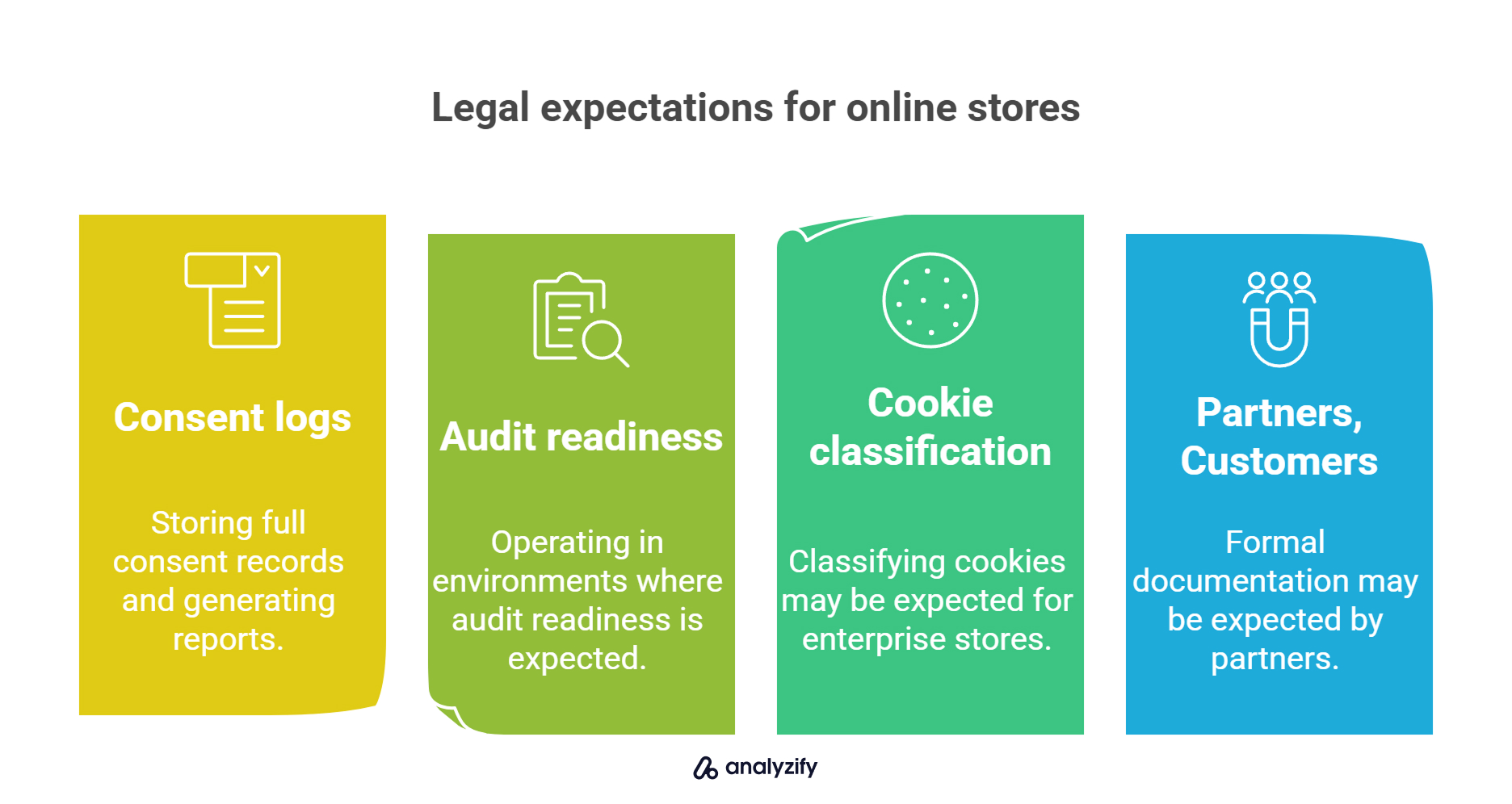
Even if your store is legally compliant with Shopify’s tools, your partners, legal team, or enterprise customers may expect more formal documentation.
You Need Script Blocking Based on Consent
Most marketing platforms — including Meta, TikTok, and LinkedIn — require that tracking scripts be blocked until the user actively opts in. While Cookiebot can technically enforce this through manual script configuration, it doesn’t offer official or out-of-the-box integrations for these platforms. Even for Bing Ads — where documentation exists — real-world implementation examples are limited.
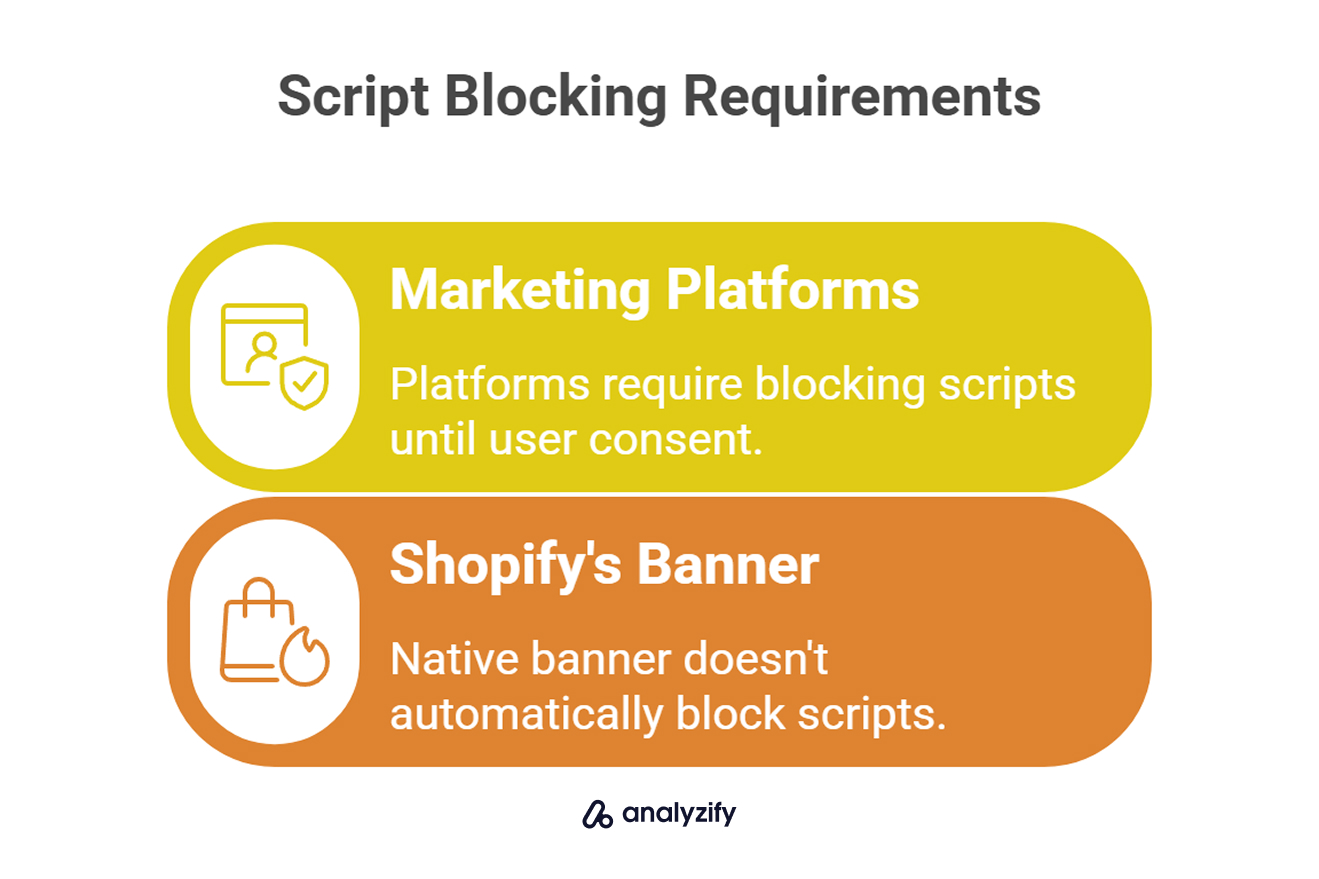
Shopify’s native banner doesn’t block these scripts automatically, which means trackers may still load before consent — potentially causing data leakage, inaccurate attribution, or even non-compliance with platform policies.
You Want a Dedicated Consent Center and Cookie Declaration
Some merchants need to offer more than a popup. Cookiebot allows you to embed a cookie declaration page and give users the ability to revisit and change their preferences at any time — not just when the banner first appears.
This may be required by internal privacy policies, partner agreements, or accessibility goals.
Can You Use Both Together? (Shopify Banner + Cookiebot)
Yes — and in some cases, using both Shopify’s native banner and a CMP like Cookiebot is not only possible, but recommended. However, it requires a clear understanding of which tool is responsible for what, and how they interact under Shopify’s Customer Privacy framework.
Here’s how this combination typically works in practice:
Shopify Handles Region Display and Consent Signals
Shopify’s Customer Privacy API determines when and where to show the consent banner. It also passes consent signals — like ad_storage or analytics_storage — to Google Consent Mode, which many themes and tracking scripts rely on.
When both banners are in place, Shopify’s system typically controls display logic, especially if you’re using the Shopify-managed checkout.
Cookiebot Adds Script Blocking and Consent Logging
You can layer Cookiebot on top of Shopify to handle cookie scanning, blocking, and logging — all things Shopify does not natively manage. Cookiebot can inject script blocking logic across the site, while Shopify manages frontend display and user regions.

In this hybrid setup:
Shopify = Display rules + signal communication
Cookiebot = Scanning + blocking + compliance reporting
You’ll Need to Prevent Banner Overlap
Running two banners visibly at the same time would create confusion. Merchants using Cookiebot often disable Shopify’s banner display, while continuing to rely on the underlying Customer Privacy API and Consent Mode integration.
That way, Cookiebot handles the user interaction, while Shopify still receives the correct backend signals.
Technical Setup Must Be Verified
If you choose to run both, you’ll need to ensure:
Shopify’s privacy API is initialized correctly
Cookiebot’s scripts are inserted without conflict
Your other tracking scripts are adapted to wait for consent signals from the right source
Analyzify’s setup allows for this hybrid structure. We’ve worked with both banners and can help merchants decide which elements to keep, suppress, or combine — depending on the store’s legal needs and tech stack.
Quick Comparison: Shopify Banner vs Cookiebot
| Use Case / Feature | Shopify Native Banner | Cookiebot or Full CMP |
|---|---|---|
| Google Consent Mode v2 | ✅ Built-in support | ✅ Supported via setup |
| Region-Based Display | ✅ Basic (EEA, UK, US) | ✅ Custom region controls |
| Script Blocking Until Consent | ❌ Not available | ✅ Full control |
| Consent Logging & Reporting | ❌ Not available | ✅ CSV/export + dashboards |
| Cookie Scanning & Categorization | ❌ No scanner | ✅ Automated scanner |
| Preference Center (Detailed Control) | ❌ Basic toggle only | ✅ Full user control panel |
| Integration with Third-Party Tools | ⚠️ Limited | ✅ Broad compatibility |
| Ease of Setup | ✅ No external tools needed | ❌ Requires CMP configuration |
Final Thoughts: Choose Based on Your Store’s Reality
There’s no one-size-fits-all answer when it comes to consent banners. Shopify’s native banner works well for many stores — especially when privacy needs are basic and tech stacks are simple. But once your marketing setup expands, or your compliance risk increases, a full CMP like Cookiebot becomes much harder to ignore.
The key is not to overcomplicate things — but also not to leave blind spots in your tracking and consent flow.
 Shopify-Native, GDPR-Ready, Consent Mode Supported
Shopify-Native, GDPR-Ready, Consent Mode Supported 
Compliant & Clear, Consent-Based Tracking That Works
Analyzify helps you capture accurate GA4 and ad data - while fully respecting consent preferences and legal boundariesAt Analyzify, we’ve worked with both setups and helped hundreds of Shopify merchants implement the right structure for their region, tech stack, and compliance level. If you’re unsure which route to take — or how to combine them safely — we’re here to help you make that decision confidently and get it implemented correctly.































